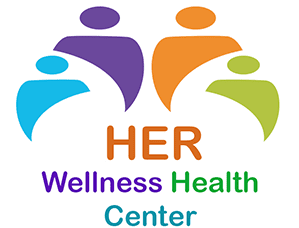Click HERE To Buy Minocin Online ↓

Understanding Minocin: What Is It and How It Works
Minocin, a brand name for minocycline, is a tetracycline antibiotic primarily used to treat bacterial infections. Minocin works by inhibiting protein synthesis in bacteria, thereby preventing their growth and proliferation. In the context of rosacea, Minocin's anti-inflammatory properties play a crucial role in reducing skin redness and inflammation, providing significant relief for those suffering from this chronic condition.
Understanding the mechanism of minocycline is key to appreciating its benefits for rosacea treatment. By targeting the inflammatory pathways that exacerbate rosacea symptoms, Minocin not only addresses the bacterial aspect but also offers relief from the associated redness and pustules. This makes it a versatile option in the ongoing battle against rosacea.
| Mechanism | Benefit |
|---|---|
| Inhibit Protein Synthesis | Reduces Bacterial Growth |
| Anti-inflammatory Properties | Reduces Redness and Inflammation |
Clinical Trials: Assessing Minocin's Efficacy for Rosacea

In clinical trials, minocin has shown promising results for patients suffering from rosacea. Researchers observed a significant reduction in inflammatory lesions and facial redness, some of the hallmark symptoms of rosacea. Participants reported noticeable improvements in their skin's appearance, often within the first few weeks of treatment. Investigators also noted that minocin effectively maintained these positive outcomes over longer durations, making it a viable option for chronic management. These findings underscore the potential of minocin as an effective therapeutic agent for those combating the challenges of rosacea.
Success Stories: Real Patients Share Their Experiences
After struggling with rosacea for years, Jane found new hope when she started using Minocin. She recalls how her redness and flare-ups significantly reduced within weeks, boosting her confidence and changing her daily life. Similarly, Robert, another patient, shared his transformative journey. Despite initial skepticism, Minocin offered him relief from persistent rosacea symptoms. Both individuals highlight their improved skin health and overall well-being, attributing their success to the consistent use of Minocin, showcasing the drug’s potential to create positive experiences for rosacea sufferers.
Side Effects: What to Watch Out for

When taking Minocin, it's crucial to be aware of potential side effects that could arise. Some patients may experience mild symptoms such as nausea, dizziness, or headaches, which usually subside as the body adjusts to the medication. However, more serious side effects, like severe skin reactions, changes in vision, or even symptoms of liver damage, need immediate medical attention. Ensuring open communication with your healthcare provider can help you manage and mitigate these risks effectively.
While Minocin can be a game-changer for managing rosacea, patients should also watch for signs of photosensitivity, which can make your skin more susceptible to sunburn. Wearing sunscreen and protective clothing becomes essential during treatment. It's always advisable to have regular check-ups to monitor any emerging issues, ensuring that Minocin continues to work safely and effectively for you.
Comparing Minocin with Other Rosacea Treatments
When comparing Minocin to other rosacea treatments, it's essential to consider effectiveness, side effects, and patient satisfaction. Minocin, a tetracycline antibiotic, often shows rapid improvement in inflammatory rosacea lesions. However, some patients may experience gastrointestinal discomfort or dizziness. In contrast, topical treatments like metronidazole offer fewer systemic side effects but may take longer for visible results. Laser therapy provides another option, targeting vascular symptoms but often with higher costs and multiple sessions. Ultimately, the choice hinges on individual responses and medical advice.
```html
| Treatment | Benefits | Drawbacks |
|---|---|---|
| Minocin | Rapid improvement of lesions | Gastrointestinal discomfort, dizziness |
| Metronidazole (topical) | Fewer systemic side effects | Slower results |
| Laser Therapy | Targets vascular symptoms | Higher costs, multiple sessions |
Tips for Managing Rosacea While Taking Minocin
Managing rosacea while taking Minocin involves adopting a comprehensive skincare routine. Daily use of a gentle cleanser and moisturizer suitable for sensitive skin can prevent irritation. Additionally, applying a broad-spectrum sunscreen with at least SPF 30 helps protect your skin from harmful UV rays, which can exacerbate rosacea symptoms. Staying hydrated and maintaining a balanced diet rich in anti-inflammatory foods, such as fruits and vegetables, may also contribute to better skin health.
It's essential to identify and avoid personal rosacea triggers, which vary from person to person. Common triggers include spicy foods, hot beverages, alcohol, and extreme weather conditions. Keeping a journal to track flare-ups can help pinpoint specific aggravating factors. Stress management techniques, such as meditation, yoga, or deep-breathing exercises, can further help mitigate stress-induced rosacea flares.
Regular follow-ups with your dermatologist ensure that your treatment plan remains effective and tailored to your unique needs. Adjustments to your Minocin dosage or integrating additional therapies might be necessary based on your progress. Combining medical treatment with these proactive measures can optimize your rosacea management and enhance your quality of life.
